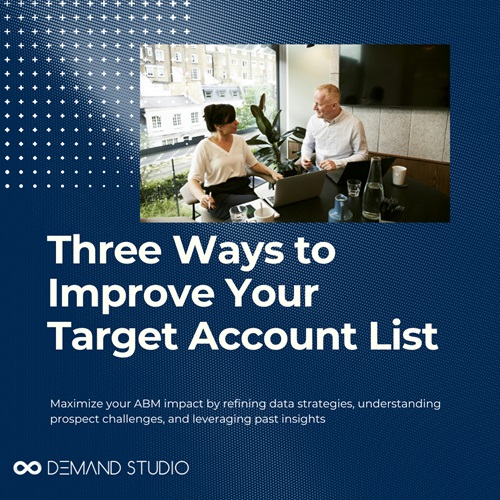Recent Posts
- What Can Demand Generation Learn from Baseball?тАО тАО тАО тАО тАО тАО тАО тАО тАО тАО тАО тАО тАО тАО тАО тАО тАО тАО тАО тАО тАО тАО тАО тАО тАО тАО тАО тАО тАО тАО тАО тАО тАО тАО тАО тАО тАО тАО тАО тАО тАО тАО тАО тАО тАО тАО тАО тАО тАО тАО тАО тАО тАО тАО тАО тАО тАО тАО тАО тАО тАО тАО тАО тАО
- What exactly is a BANT lead?тАО тАО тАО тАО тАО тАО тАО тАО тАО тАО тАО тАО тАО тАО тАО тАО тАО тАО тАО тАО тАО тАО тАО тАО тАО тАО тАО тАО тАО тАО тАО тАО тАО тАО тАО тАО тАО тАО тАО тАО тАО тАО тАО тАО тАО тАО тАО тАО тАО тАО тАО тАО тАО тАО тАО тАО тАО тАО тАО тАО тАО тАО тАО тАО тАО тАО тАО тАО тАО тАО тАО тАО тАО тАО тАО тАО тАО тАО тАО тАО тАО тАО тАО тАО тАО тАО тАО тАО тАО тАО тАО тАО тАО тАО тАО тАО тАО тАО тАО тАОтАОтАО
- Are You Sure You Know Your TAL from Your ABM?тАО тАО тАО тАО тАО тАО тАО тАО тАО тАО тАО тАО тАО тАО тАО тАО тАО тАО тАО тАО тАО тАО тАО тАО тАО тАО тАО тАО тАО тАО тАО тАО тАО тАО тАО тАО тАО тАО тАО тАО тАО тАО тАО тАО тАО тАО тАО тАО тАО тАО тАО тАО тАО тАО тАО тАО тАО тАО тАО тАО тАО тАО тАО тАО тАО тАО тАО
- Why is the Right Martech Stack and Platform Just Not Enough?тАО тАО тАО тАО тАО тАО тАО тАО тАО тАО тАО тАО тАО тАО тАО тАО тАО тАО тАО тАО тАО тАО тАО тАО тАО тАО тАО тАО тАО тАО тАО тАО тАО тАО тАО тАО тАО тАО тАО тАО тАО тАО тАО тАО тАО
- Why Humpty Dumpty Would Have Had a Great Career in MarketingтАО тАО тАО тАО тАО тАО тАО тАО тАО тАО тАО тАО тАО тАО тАО тАО тАО тАО тАО тАО тАО тАО тАО тАО тАО тАО тАО тАО тАО тАО тАО тАО тАО тАО тАО тАО тАО
Recent Comments
No comments to show.
Recent Posts
Recent Posts
- What Can Demand Generation Learn from Baseball?тАО тАО тАО тАО тАО тАО тАО тАО тАО тАО тАО тАО тАО тАО тАО тАО тАО тАО тАО тАО тАО тАО тАО тАО тАО тАО тАО тАО тАО тАО тАО тАО тАО тАО тАО тАО тАО тАО тАО тАО тАО тАО тАО тАО тАО тАО тАО тАО тАО тАО тАО тАО тАО тАО тАО тАО тАО тАО тАО тАО тАО тАО тАО тАО
- What exactly is a BANT lead?тАО тАО тАО тАО тАО тАО тАО тАО тАО тАО тАО тАО тАО тАО тАО тАО тАО тАО тАО тАО тАО тАО тАО тАО тАО тАО тАО тАО тАО тАО тАО тАО тАО тАО тАО тАО тАО тАО тАО тАО тАО тАО тАО тАО тАО тАО тАО тАО тАО тАО тАО тАО тАО тАО тАО тАО тАО тАО тАО тАО тАО тАО тАО тАО тАО тАО тАО тАО тАО тАО тАО тАО тАО тАО тАО тАО тАО тАО тАО тАО тАО тАО тАО тАО тАО тАО тАО тАО тАО тАО тАО тАО тАО тАО тАО тАО тАО тАО тАО тАОтАОтАО
- Are You Sure You Know Your TAL from Your ABM?тАО тАО тАО тАО тАО тАО тАО тАО тАО тАО тАО тАО тАО тАО тАО тАО тАО тАО тАО тАО тАО тАО тАО тАО тАО тАО тАО тАО тАО тАО тАО тАО тАО тАО тАО тАО тАО тАО тАО тАО тАО тАО тАО тАО тАО тАО тАО тАО тАО тАО тАО тАО тАО тАО тАО тАО тАО тАО тАО тАО тАО тАО тАО тАО тАО тАО тАО
- Why is the Right Martech Stack and Platform Just Not Enough?тАО тАО тАО тАО тАО тАО тАО тАО тАО тАО тАО тАО тАО тАО тАО тАО тАО тАО тАО тАО тАО тАО тАО тАО тАО тАО тАО тАО тАО тАО тАО тАО тАО тАО тАО тАО тАО тАО тАО тАО тАО тАО тАО тАО тАО
- Why Humpty Dumpty Would Have Had a Great Career in MarketingтАО тАО тАО тАО тАО тАО тАО тАО тАО тАО тАО тАО тАО тАО тАО тАО тАО тАО тАО тАО тАО тАО тАО тАО тАО тАО тАО тАО тАО тАО тАО тАО тАО тАО тАО тАО тАО



